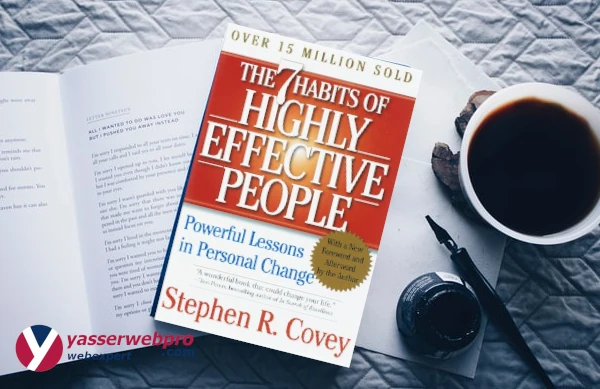How to Feel Confident: Simple Tools for Instant Success book summary
Are you tired of feeling self-conscious and unsure of yourself? Do you struggle with low self-confidence and want to learn how to overcome it? Look no further! In this article, we will explore “How to Feel Confident: Simple Tools for Instant Success” book and discover practical techniques to boost your confidence and achieve success. Now, more than ever, it’s important to have strong self-confidence to navigate the challenges and uncertainties of life.

This book by Leil Lowndes provides valuable insights and strategies to help you cultivate unshakable confidence and reach your full potential. Are you ready to transform your self-doubt into unstoppable confidence? Let’s begin!
1.The Importance of Confidence in Success
Confidence is a crucial factor in achieving success. It plays a significant role in all aspects of life, from personal relationships to professional endeavors. When you have faith in yourself and your capabilities, you are more likely to take risks, pursue opportunities, and overcome challenges. Confidence also boosts motivation, resilience, and perseverance, allowing you to navigate obstacles and accomplish your goals. Additionally, it influences how others perceive you and their confidence in your abilities. Therefore, understanding the significance of confidence in success is vital as it empowers you to cultivate and utilize this powerful attribute.2.
2. Understanding Confidence and Self-Esteem
Understanding confidence and self-esteem is crucial for personal growth and success. Here are three steps to assist you in developing a better understanding:
- Self-reflection: Take the time to analyze your thoughts, emotions, and behaviors to identify any negative patterns or limiting beliefs.
- Building self-awareness: Pay attention to your strengths, accomplishments, and areas of improvement. Recognize your worth and value as an individual.
- Seeking support: Surround yourself with positive and supportive individuals who encourage your growth and help boost your confidence.
3. Identifying Your Limiting Beliefs
Identifying your limiting beliefs is a crucial step in building confidence and achieving success. Here are four steps to help you recognize and overcome these beliefs:
- Self-reflection: Take the time to reflect on your thoughts and actions to identify any negative beliefs holding you back.
- Question your beliefs: Challenge the validity of your limiting beliefs by asking yourself if they are based on evidence or mere assumptions.
- Seek support: Share your beliefs with a trusted friend or mentor who can provide objective feedback and help you challenge and reframe them.
- Cultivate empowering beliefs: Replace limiting beliefs with positive, empowering ones that support your growth and success.
4. Overcoming Fear and Self-Doubt
Building confidence and achieving success requires overcoming fear and self-doubt. Here are five steps to help you conquer your fears:
- Identify your fears: Take time to reflect on what specific fears and self-doubts are holding you back.
- Challenge negative thoughts: Replace self-limiting beliefs with positive affirmations and challenging evidence.
- Take small steps: Gradually expose yourself to situations that make you uncomfortable to build resilience.
- Seek support: Surround yourself with supportive friends, mentors, or join a group where you can share your fears and receive encouragement.
- Celebrate achievements: Acknowledge and reward yourself for each step you take towards overcoming fear and self-doubt.
5. Developing a Positive Mindset
Developing a positive mindset is crucial for achieving success and overcoming challenges. Here are six steps to help cultivate a positive mindset:
- Practice self-affirmation: Repeat positive statements to yourself daily.
- Avoid negative influences: Surround yourself with positive people and minimize exposure to negativity.
- Cultivate gratitude: Focus on the things you appreciate in life.
- Embrace failure as a learning opportunity: See setbacks as stepping stones to growth.
- Foster optimism: Look for the silver lining in every situation.
- Take care of yourself: Prioritize self-care and maintain a healthy lifestyle.
Thomas Edison faced numerous failures before inventing the light bulb, but he maintained a positive mindset, famously stating, “I have not failed. I’ve just found 10,000 ways that won’t work.” His perseverance and positive attitude ultimately led to his success.
6. Building Confidence through Action
Building self-assurance through action is a crucial step in boosting confidence. Here are some practical steps to take:
- Set achievable goals and create a plan to accomplish them.
- Step out of your comfort zone regularly to challenge yourself.
- Practice positive self-talk and affirmations to reinforce belief in your abilities.
- Seek opportunities to learn and acquire new skills.
- Take small, consistent actions towards your goals every day.
- Celebrate your successes, no matter how small, to build momentum.
- Surround yourself with supportive and encouraging people.
Sarah, a shy introvert, made the decision to join a public speaking club. By consistently taking small steps, practicing regularly, and
receiving positive feedback from her club members, she gradually gained confidence and became a skilled and confident public speaker. Building confidence through action truly transformed her life.
7. Using Visualization and Affirmations
Using visualization and affirmations can be powerful tools for boosting confidence and achieving success. Here are 8 steps to effectively incorporate visualization and affirmations into your daily routine:
- Set clear goals: Define what you want to achieve and be specific.
- Create mental images: Visualize yourself already achieving your goals in vivid detail.
- Engage your senses: Imagine how it feels, looks, sounds, and even smells like to have achieved your goals.
- Repeat positive affirmations: Use affirmations that reinforce your belief in yourself and your abilities.
- Use present tense: Phrase your affirmations as if you have already achieved your goals.
- Repeat consistently: Incorporate visualization and affirmations into your daily routine.
- Believe in yourself: Have faith in your abilities and trust that you can achieve your goals.
- Take action: Visualization and affirmations are powerful, but they must be accompanied by action to bring about success.
8. Cultivating a Supportive Environment
Creating a supportive environment is crucial for building confidence. Here are some steps to cultivate a supportive environment:
- Surround yourself with positive and encouraging people who believe in you.
- Limit interactions with negative individuals who bring you down.
- Seek out mentors or role models who inspire and motivate you.
- Join supportive communities or groups that share your interests or goals.
- Practice open and honest communication with your loved ones.
- Set boundaries and establish a safe and respectful space for yourself.
- Celebrate the achievements and successes of others.
- Offer support and encouragement to those around you.
- Practice self-compassion and surround yourself with self-affirming messages.
By following these steps, you can create an environment that uplifts and empowers you, allowing your confidence to flourish. Remember, a supportive environment can have a significant impact on your overall well-being and success.
9. Maintaining Confidence in the Face of Setbacks
Maintaining confidence in the face of setbacks can be challenging, but with the right mindset and strategies, it is possible. Here are some steps to help you stay confident during difficult times:
- Accept the setback as a learning opportunity and not a reflection of your worth.
- Focus on your strengths and past successes to boost your self-belief.
- Set realistic expectations and break down your goals into manageable steps.
- Seek support from friends, family, or a mentor who can provide guidance and encouragement.
- Practice self-care to reduce stress and maintain a positive mindset.
- Stay resilient and adapt to changes by finding alternative solutions or paths.
- Learn from failures and adjust your approach for future success.
- Celebrate small victories along the way to keep your motivation high.
- Stay persistent and don’t let setbacks define your journey.
- Embrace challenges as opportunities for personal and professional growth.
How to Use These Tools in Your Daily Life?
To effectively incorporate the tools from “How to Feel Confident: Simple Tools for Instant Success” into your daily life, follow these steps:
- Identify areas where you may lack confidence.
- Practice positive self-talk and affirmations regularly.
- Set achievable goals and celebrate small victories along the way.
- Embrace failure as an opportunity for growth and learning.
- Prioritize self-care and your overall well-being.
Pro Tip: Consistency is crucial – make using these tools a daily habit to cultivate long-term confidence.
What Are Some Exercises to Boost Confidence?
There are several exercises that can help boost confidence:
- Practice positive self-talk to replace negative thoughts with affirming ones.
- Set achievable goals and celebrate each accomplishment to build a sense of achievement.
- Step out of your comfort zone regularly to overcome fears and expand your comfort zone.
- Surround yourself with supportive and positive people who uplift and encourage you.
- Engage in activities that you enjoy and excel at to boost self-esteem.
Remember, building confidence takes time and effort. Be patient and kind to yourself as you cultivate self-assurance.
How Can You Apply These Tools in Your Career?
In your career, you can utilize the tools from the book “How to Feel Confident: Simple Tools for Instant Success” in the following ways:
- Identify and challenge limiting beliefs that may be holding you back from taking risks or pursuing new opportunities.
- Overcome fear and self-doubt by actively replacing negative thoughts with positive affirmations.
- Cultivate a positive mindset by focusing on your strengths, setting achievable goals, and celebrating small victories.
- Build confidence through taking action and stepping out of your comfort zone to tackle new challenges.
- Use visualization techniques to imagine success in your career and affirmations to reinforce positive beliefs.
- Create a supportive environment by seeking out mentors, networking, and surrounding yourself with positive and encouraging colleagues.
Pro-tip: Remember that confidence is a skill that can be developed and nurtured. Consistently applying these tools can lead to positive changes in your career growth and help you achieve greater success.
What Are the Benefits of Being Confident?
Confidence offers a plethora of benefits, including improved mental well-being, greater resilience, and increased success in various areas of life. It allows individuals to overcome obstacles, take risks, and seize opportunities. Those who possess confidence are more likely to achieve their goals and have higher levels of self-esteem. They are also perceived as more competent and trustworthy by others, leading to stronger relationships and career advancements.
In fact, studies have shown that confidence is strongly correlated with professional success and overall life satisfaction. Embracing confidence empowers individuals to navigate challenges, pursue their passions, and live fulfilling lives. Additionally, research has found that confident people tend to earn higher salaries and are more likely to be promoted in their careers.
How Can You Help Others Build Confidence?
Assisting others in building their confidence is a valuable way to support their personal and professional growth. Here are some steps you can take to help others on their journey to confidence:
- Listen actively and empathetically to their concerns and insecurities.
- Offer encouragement and positive feedback to help boost their self-esteem.
- Provide constructive criticism and guidance to help them improve their skills and abilities.
- Set an example by demonstrating confidence in your own actions and decisions.
- Encourage them to step out of their comfort zone and take on new challenges.
- Assist them in setting realistic goals and developing action plans to achieve them.
- Celebrate their successes and acknowledge their progress along the way.
Remember that building confidence is a journey that may take time and effort. By offering your support and guidance, you can help others develop the confidence they need to succeed.




